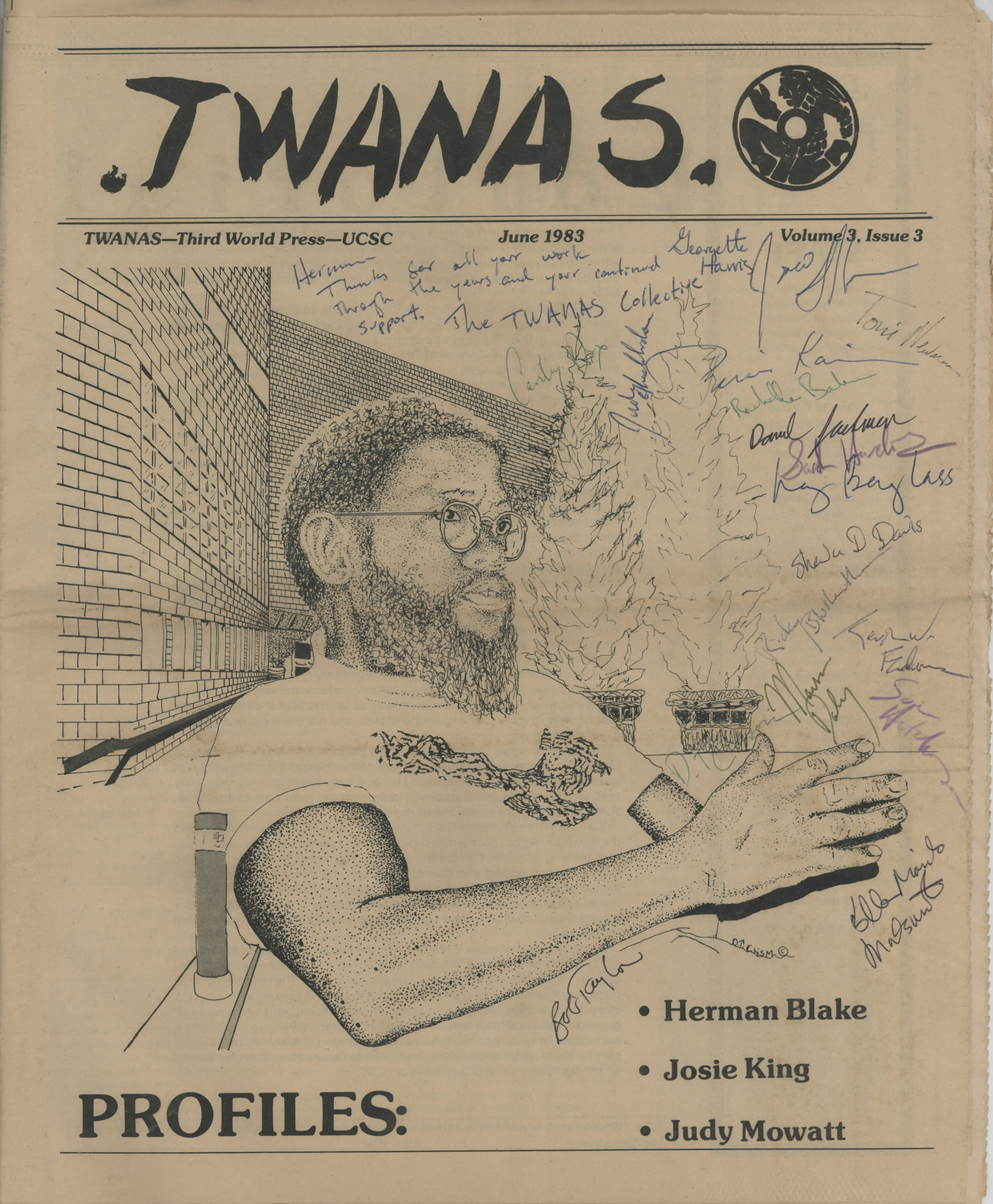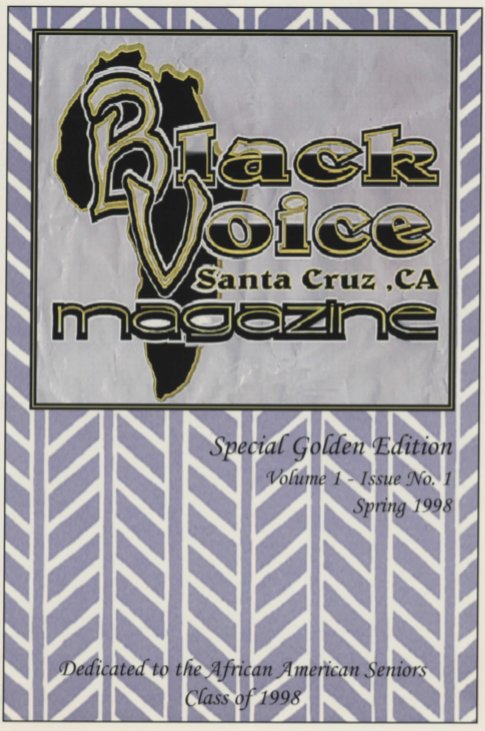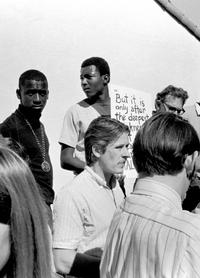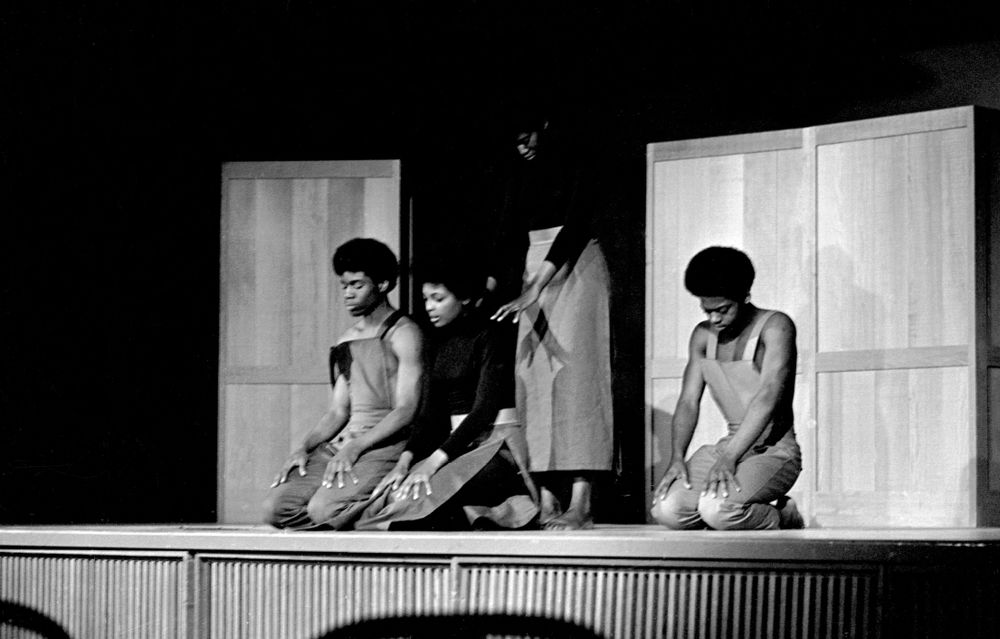See you when I see you...
Black Student Life at UCSC 1965-present
In the above tripartite
poem “The Bonds Which Bind Us,” Mark Welsh addresses our ancestors, ourselves,
and the unborn. He speaks of seeds of survival planted within us to pull us
through trying times. He reminds us to celebrate ourselves and our dreams. This
video was recorded before many current Black UCSC students were born. This
performance embodies the foundational idea of this exhibition: our Black lives
and Black dreams will always matter as long as we keep them going.
What does it mean to be a
Black student at an institution such as UCSC? The school’s remarkably low percentage
of Black students can be explained away by factors such as Proposition 209 or
the lack of racial diversity in the town of Santa Cruz. As this exhibition
shows, official reports and initiatives from UCSC crop up repeatedly. Recruitment
and retention efforts cycle through, failing to address the daily realities of
Black life on UCSC’s campus. Black students throughout the years have faced similar
barriers since the first handful of us were admitted. The narratives and
documents listed here will show how students were subjected to conditions such
as being the only Black student in their classes, not having the resources available
to center their work around Blackness, and no recourse available when faced
with racist behavior.
One student narrative
that was not included in this exhibition was from Dr. Ekua Omosupe. She earned her
PhD in Literature in 1997 and was interviewed as part of the Regional History Project
in 2002. Dr. Omosupe’s story of her time at UCSC is familiar: she experienced
great love from some within the UCSC community and horrific racism from others.
Throughout awful conditions she was expected to continue being a graduate
student—and she did. When describing a particularly torturous experience where
campus police targeted her 10-year-old son over the course of 6 years, Dr.
Omosupe said, “there were so many times when my mind and my body were split. I
had to go to those classes and do my work. I had to show good face to all of
these people who were against me, who already said my son was guilty.”
But as Mark Welsh reminds
us in his poem, “too often we concern ourselves with the negative aspects of
our dwelling here rather than catapulting ourselves forward on the strength of
our endurance.” This exhibition is an invitation to all Black UCSC students
(past, present, and future) to share in each other’s endurance. A few years
removed from UCSC, Dr. Omosupe reflects, “I thank the Great Spirit that through
all of that I still have faith in what human beings can accomplish if we decide
to do that right thing…I thank God that I have healed, and I continue to heal
from so many things. Because as a black woman in the world, it is very
difficult. It is very, very difficult to survive. History attests to that, past
and present. I'm glad that they were not able to drive me out, that they did
not press me into such a place of despair that I would quit.”
So what does it mean to
be a Black student at UCSC? Each Black student who entered UCSC had a desire
for education. They had plans and dreams that left a trace here. Regardless of whether
or not those dreams were realized, they should be honored. Consider this
exhibition as an opportunity to celebrate ourselves and each other.
Header image:
Photographs: Oakes College students 1975, undated. Box 7. Folder 46.
J. Herman Blake papers. MS 415. Special Collections and Archives, University Library, University of California, Santa Cruz.
Background image:
Stevenson College: Student.
Steve Rees photographs of the University of California, Santa Cruz . UC Santa Cruz. Special Collections and Archives.
I’ll see you when I see you...
Dear reader,
Archives are not neutral and
neither is this exhibition. I am a queer Black woman working toward a PhD. The
idea for this project was born out of my desire to refuse erasure from UCSC’s
historical narrative. I wanted to see myself and I wanted to see other ways of
being Black at UCSC. I wanted to poke at the institutional memory of UCSC and
see what stories would fall out. It was especially important to me to center
student voices and decenter the university’s messaging about students. While
I was always confident that I could find evidence of Black student life within UCSC’s
Special Collections and Archives, I was surprised at the amount of material. I
looked through photographs, ephemera, course descriptions, news articles,
zines, and more. I created this digital exhibition in Fall 2021 as part
of my work as a CART fellow. This fellowship allowed me the time to explore the archives and develop
an understanding of what has been left for me to find.
Of course, there were holes. Inconsistent
record-keeping was a barrier, as were the unprocessed materials within the
collection. For every instance of Black life that I found, countless others exist
only in the personal memories/collections of students who have come and gone. These
holes can be seen as opportunities. My time as a CART fellow is complete but I
am hopeful that other interested members of the UCSC community will find
something here that piques their interests and takes them on an archival
journey of their own.
Thank you to the CART
staff for giving me this opportunity. I would also like to extend thanks to the
rest of the Special Collections and Archives staff, including the student
workers, for supporting my research. As always, I am grateful to my friends and
family for indulging in my curiosity and giving me reasons to continue.
Thank you for reading,
Jazmin Benton
PS. To all the Black
students at UCSC who I’ve been lucky enough to exist alongside—I’ll see you
when I see you.
The material in this exhibit is provided for personal study, scholarship, or research. Transmission or reproduction of any material protected by copyright beyond that allowed by fair use requires the written permission of the copyright owners. The authors or their heirs retain their copyrights to the material. To request the removal of items from this online exhibit, please contact us.




